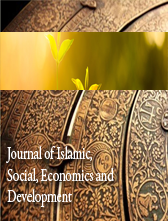LEGAL ANALYSIS ON WOMEN EMPLOYMENT IN MALAYSIA IN REFERENCE TO INTERNATIONAL LAWS
Abstract
This paper delves into the employment of women in Malaysia through the lens of international law. The study examines how international legal frameworks, including those set forth by organisations like the International Labour Organisation (ILO), impact the rights and treatment of women in the workforce. While international regulations aim to foster gender equality, the analysis highlights potential gaps and limitations in their applicability to the specific context of Malaysia. By scrutinising the alignment between domestic legislation and international standards, this study provides insights into the extent to which women's employment rights are safeguarded within the country's legal framework. The core methodology adopted for this research is library-based. Essential information is sourced from a variety of materials including legal statutes, textbooks, reports, legal journals, scholarly articles, and reported cases. A critical analysis approach has been chosen for this research. This method is particularly suitable for this study because its objective is to assess the sufficiency of Malaysia's laws concerning the rights of working mothers when referring to international laws. The study found that there are adequate international regulations protecting discrimination against working women. However, they lack in being fully inclusive, as they do not explicitly address the concerns of working mothers. In addition, not all international laws are integrated into Malaysian laws.













